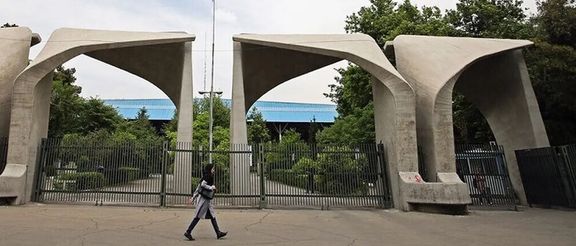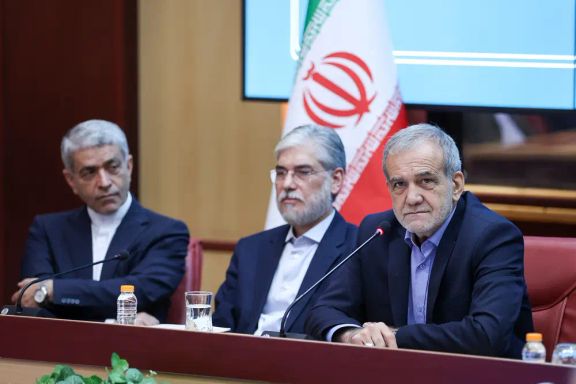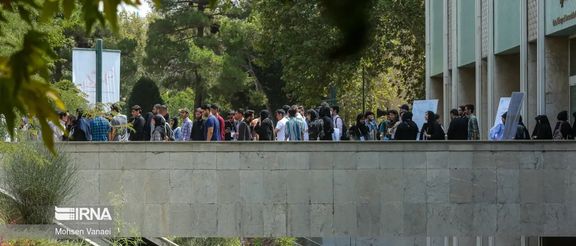Over 1,500 Iranian professors punished for supporting protests: Ex-MP

Mahmoud Sadeghi, a former Iranian lawmaker, has disclosed that over 1,500 university professors have been subjected to administrative punishments for their support of the Woman, Life, Freedom protests.
Sadeghi, who now serves as the Secretary-General of the Islamic Association of University Professors, shared the disturbing information in an interview with Jamaran on Saturday. He stated, "I have heard that around 1,500 professors signed statements or commented on the events of 2022," and added, "Many of them were in official positions and couldn't be easily targeted, but they faced issues in their annual promotions."
The crackdown on academia has not been limited to promotional hindrances. Sadeghi confirmed news reports that since early 2023, between 80 to 90 university professors have been outright dismissed or had their contracts terminated.
Sadeghi also spoke about professors without tenure, and not hired by the government. "A significant number were in the process of being hired, and most of their recruitment procedures had been completed, but they were disqualified during the interview," Sadeghi explained.
The Woman, Life, Freedom protests, ignited by the death of Mahsa Amini at the hands of the morality police in September 2022, quickly evolved into a nationwide movement that shook the foundations of the Islamic Republic. Students and university professors, traditionally voices of progress and change in Iranian society, were among the most active participants in the demonstrations. In response, the government not only cracked down on the streets but also initiated a systematic campaign to purge universities of those who supported the movement.
In a recent public statement, Iran's new president Masoud Pezeshkian announced his intention to reinstate dismissed professors and allow expelled students to return to their studies. At the introduction ceremony of the new Minister of Science, Pezeshkian called for a review of the cases of these individuals, aligning his rhetoric with the promises made during the election campaign. However, the feasibility of his promises remains questionable.

Within hours of Pezeshkian's statement, Mostafa Rostami, the head of the Supreme Leader’s representative in universities, responded by implicitly rejecting the notion of reinstating the dismissed educators.
The days following Pezeshkian’s announcement saw the expulsion of two additional students, a clear indication that the system’s hardline elements remain opposed to any concessions.
Mojtaba Hashemi, a journalist, told Iran International that the reality suggests Pezeshkian faces obstacles in implementing any meaningful reforms.
“One of the most glaring issues is the ongoing rift between Iran’s academic institutions and the Islamic Republic, a divide that has only widened in recent years,” he added.
Pezeshkian's approach to managing this crisis has been to place the Ministry of Science under the control of Hossein Simaei Sarraf, an academic with ties to the seminary and a trusted figure of Supreme Leader Ali Khamenei.

According to Hashemi, Sarraf’s appointment signals a continuation of the Khamenei's ideological control over universities, rather than a move towards greater academic freedom. Sarraf’s track record shows no evidence of supporting freedom of speech or standing up for academic independence, making it unlikely that he will champion the cause of those professors and students who have been punished for their political views.
Pezeshkian's own history is also telling. During his previous tenure in academic leadership, he played a role in the efforts to "purify" universities, aligning closely with Khamenei’s vision of an Islamized higher education system. This history casts doubt on Pezeshkian’s current rhetoric about restoring justice in the universities. His previous actions suggest that he has been complicit in the policies that have led to the current climate of repression within academic institutions.
Following Pezeshkian's recent statements, the crackdown has continued unabated. Two female students, Sheida Aghahamidi, an anthropology student at the University of Tehran, and Sahra Rezaei, a journalism student at Allameh University, were recently subjected to disciplinary measures. Aghahamidi was banned from studying for two semesters, while Rezaei’s expulsion was confirmed. These actions are part of a broader pattern of repression that has seen over 12 students barred from continuing their education in just the past month alone.
Reports from university news outlets paint a grim picture of the state of academic freedom in Iran. Following the Woman, Life, Freedom uprising, more than 3,700 students have been targeted through various means of repression. Over 804 students have been arrested and sentenced by the judiciary, while more than 58 university professors have been dismissed. This wave of repression has created a militarized environment within Iran’s universities, where security forces maintain a constant presence, and independent student organizations have been dismantled or co-opted by government-backed groups.
Despite such an environment, Pezeshkian has so far made no moves to change the management structure of universities. All universities remain under the leadership of figures closely linked to President Ebrahim Raisi’s government and the security apparatus.
“Pezeshkian’s expectation that these same officials, who have been complicit in the expulsion of students and professors, will now reverse their decisions at his behest seems unrealistic,” added Hashemi saying, “If Pezeshkian were concerned with justice and freedom in the universities, he would have begun by reforming the management structure of these institutions, rather than entrusting them to figures loyal to Khamenei.”
Many believe that the only likely outcome of Pezeshkian’s promises is a superficial reinstatement of a small number of students and professors, which would be used as a propaganda tool to bolster the system’s image. Figures like Ali Sharifi-Zarchi at Sharif University was allowed to return, but only under stringent conditions imposed by security agencies. Such token gestures, however, will do little to address the broader injustices that have plagued Iran’s universities.

The ongoing repression within Iran’s academic institutions is a continuation of a long-standing strategy by the Islamic Republic to maintain control over the intellectual life in the country. The Woman, Life, Freedom movement has shown that the divide between the government and the academic community is deeper than ever. Students and professors alike have made it clear that they have no intention of reconciling with a government that has consistently violated their rights.